Imagine adding a magical touch to your dishes, bringing a nutty, toasty depth and an intriguing crunch. This is the secret of Roasted Rice Powder (Khao Khua), a cherished ingredient in Thai cuisine. Whether you're a seasoned chef or a home cook, this simple yet transformative addition will elevate your culinary creations. Let's dive into this easy recipe and uncover the wonders of Khao Khua!
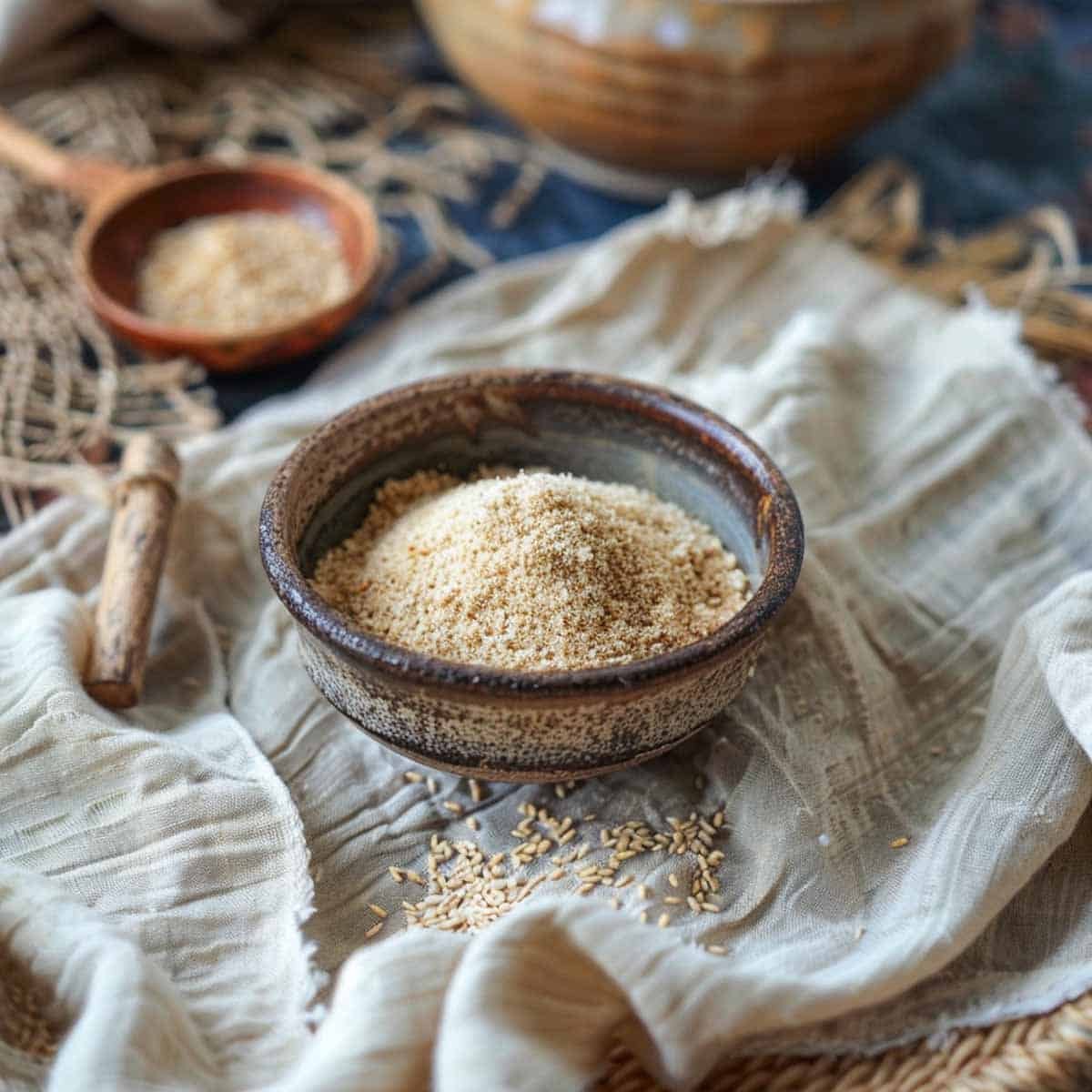
Historical Background and Influence of Roasted Rice Powder (Khao Khua)
Roasted Rice Powder, or Khao Khua, has a long-standing history in Thai cuisine, particularly in the northeastern region of Isan. Traditionally used to add texture and flavor to larb (a type of salad), it symbolizes the resourcefulness of Thai cooking, where every ingredient has its purpose. Toasting rice to bring out its nutty essence is a testament to the ingenuity and depth of Thai culinary traditions. This humble ingredient has influenced many dishes, adding a distinctive, subtle, and profound touch.

Sawasdee Kha, (Hello)
Khao Khua holds a special place in my heart; it took me back to my grandmother's kitchen as a child. The aroma of perfectly toasted rice would fill the house, and I always loved sprinkling it on salads and soups for that unique crunch. Since then, it has been a must-have in my kitchen, adding a nostalgic and authentic touch to my cooking. The golden color and inviting aroma of Roasted Rice Powder always make me smile. I'm thrilled you're trying out this recipe and sharing your experience. Let's embark on this flavorful journey together!

Welcome! I'm So Glad You're Here. Join Me In Making Roasted Rice Powder , Together—It's Going To Be Delicious!
Essential Ingredients for Roasted Rice Powder.
To create the perfect Roasted Rice Powder (Khao Khua), you'll need glutinous rice, which toasts to a beautiful golden brown, releasing a nutty aroma and flavor. In addition, optional ingredients like kaffir lime leaves and lemongrass can be added for an extra layer of fragrance. See the recipe card for exact quantities.
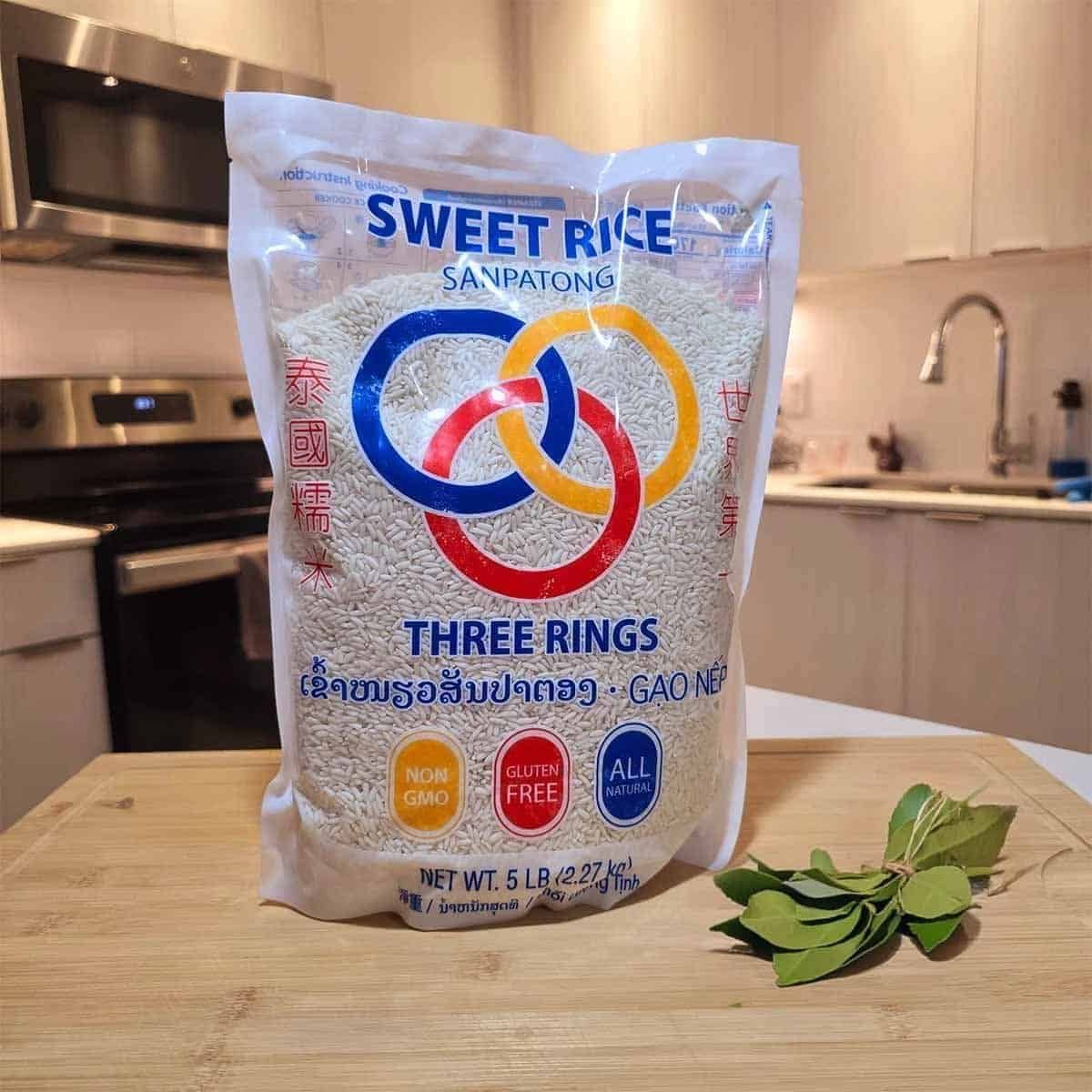
Preparation of Rice Drying the Rice
1.Begin by rinsing the sticky rice under cold water until the water runs clear. This removes excess starch and prevents clumping.
2.Spread the rinsed rice on a clean cloth or a sieve and let it air dry for about 30 minutes.
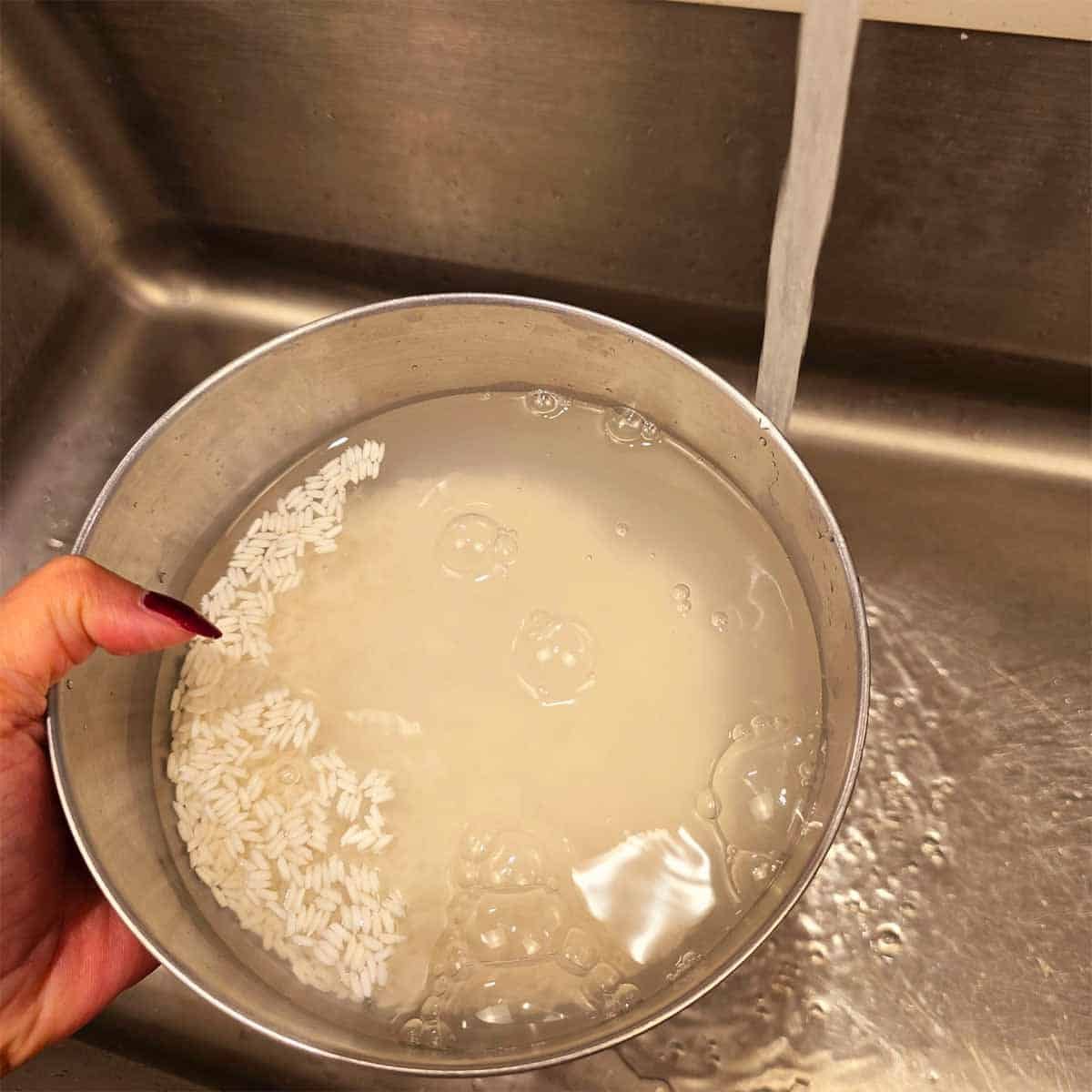
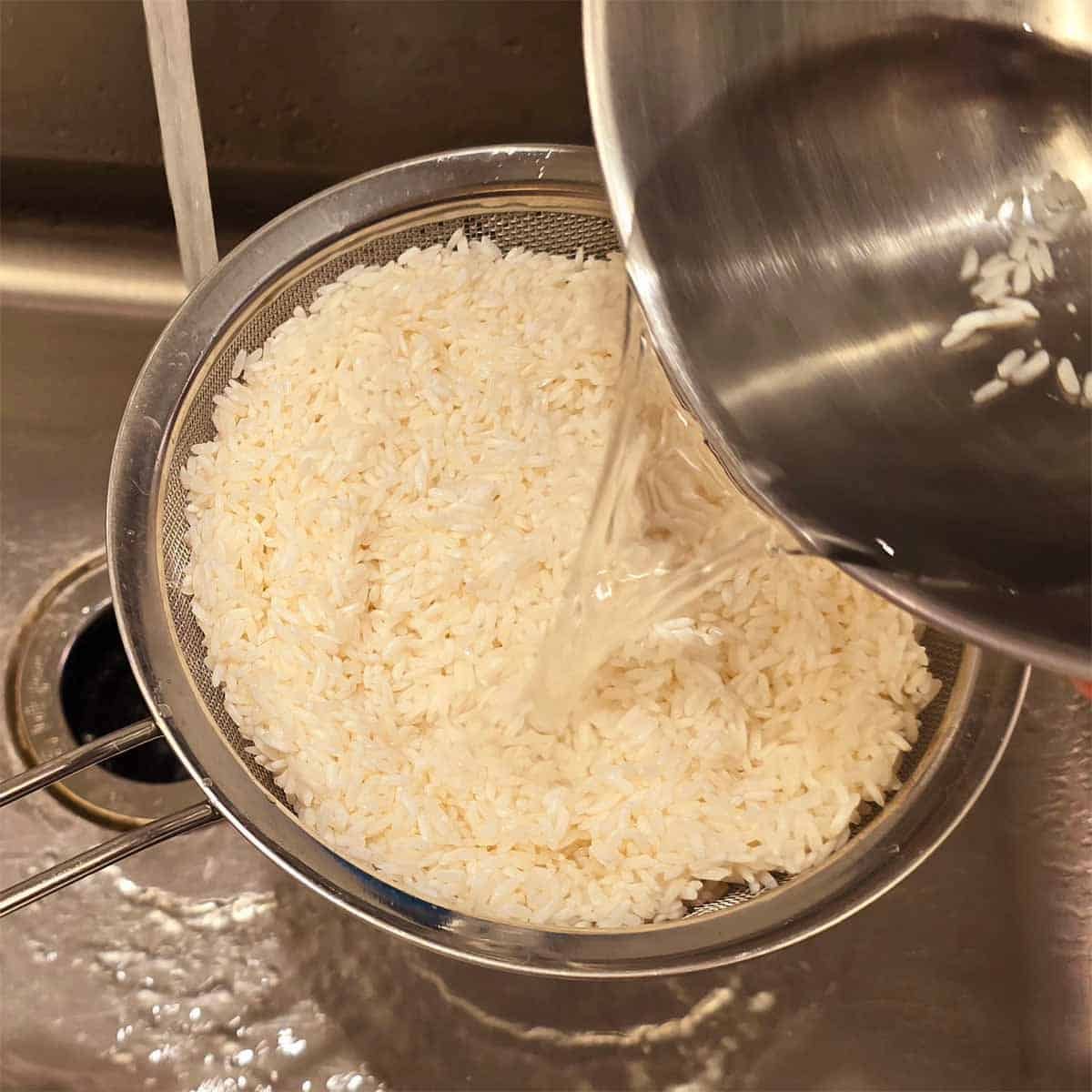
Cooling and Grinding Toasting the Rice
Heat a skillet over medium heat. Add the dry rice (and optional kaffir lime leaves). Stir continuously for 15-20 minutes or until the rice turns a golden brown and smells nutty.
Allow the toasted rice to cool completely. Then, grind the rice into a coarse powder using a spice grinder, or a mortar and pestle.
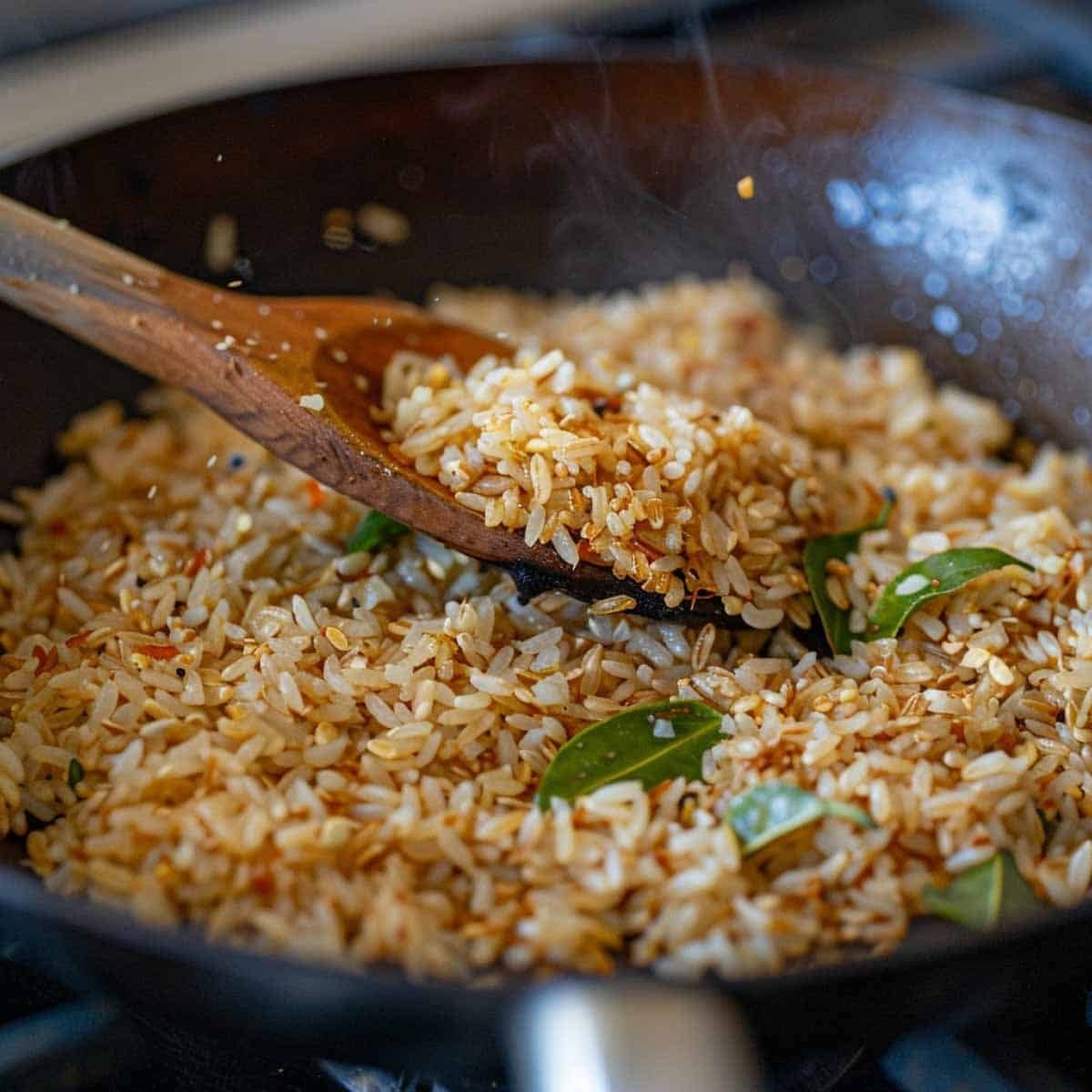
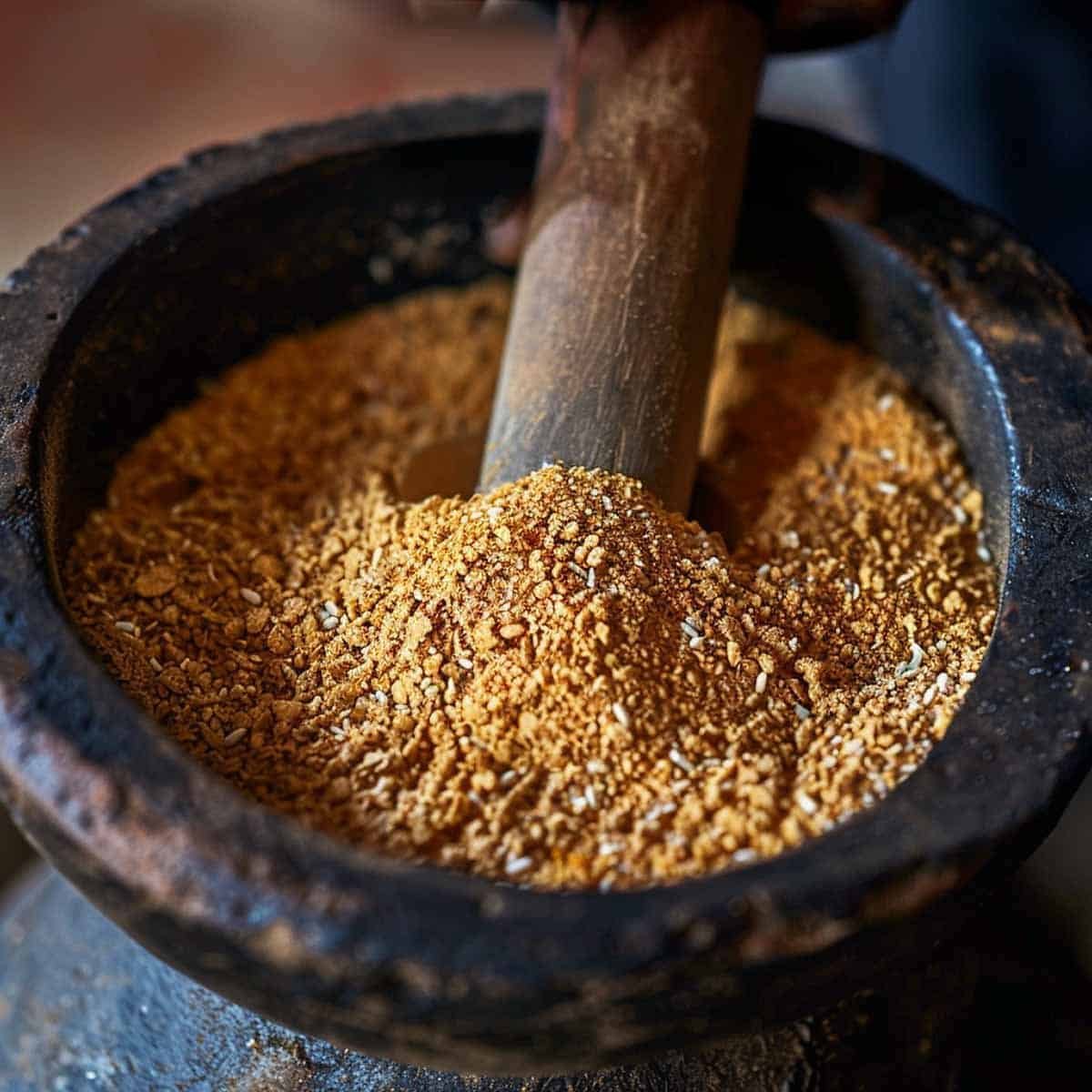
Finish and Serve: Elevate Your Dishes with Roasted Rice Powder
Sprinkle Roasted Rice Powder (Khao Khua) over salads, soups, or grilled meats to add a nutty, toasty flavor and delightful crunch. This versatile powder enhances the texture and taste of your dishes, making them irresistibly delicious.
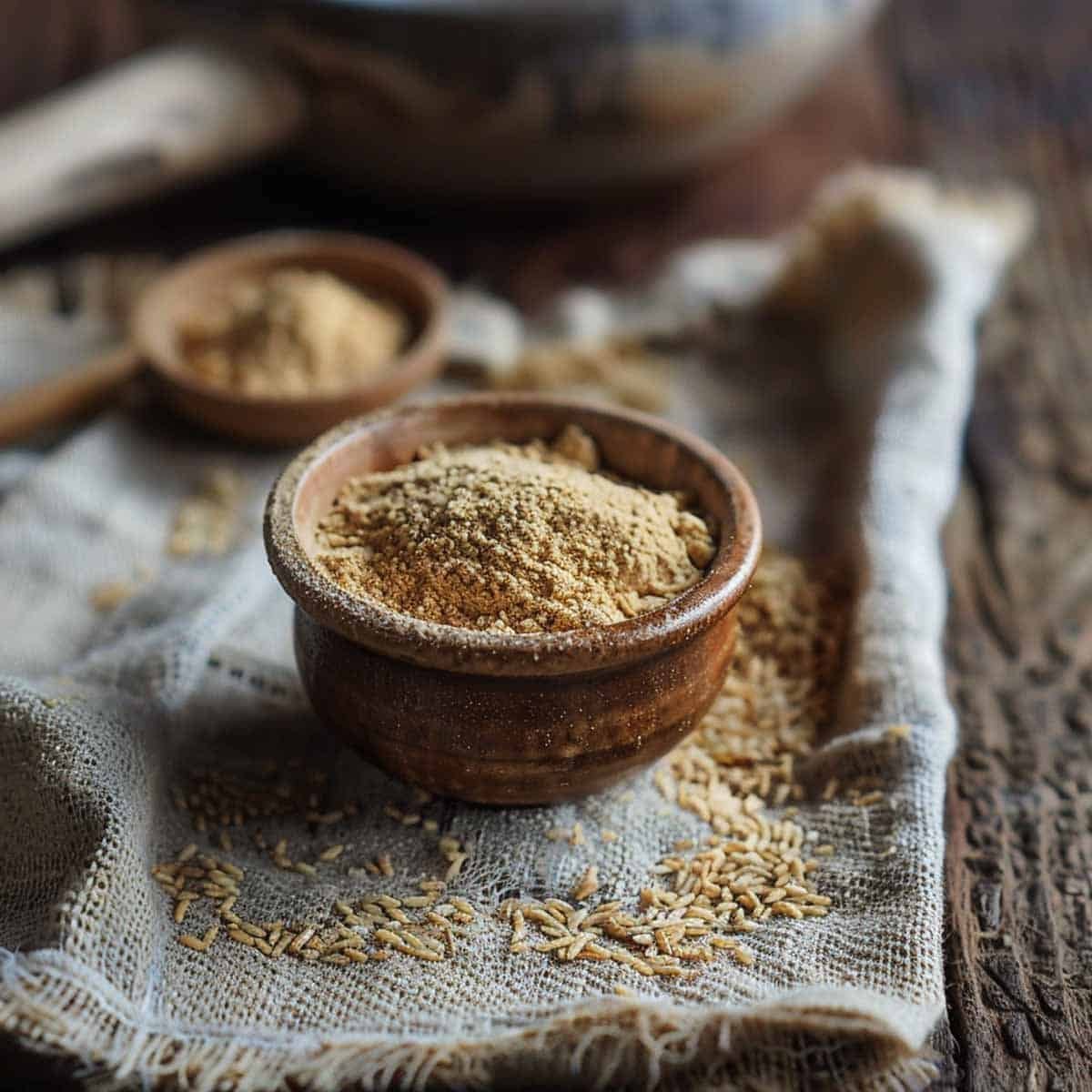
Tips for Authenticity and Customization For Roasted Rice Powder (Khao Khua)
Using Authentic Ingredients
To achieve the authentic flavor of Roasted Rice Powder (Khao Khua), it's crucial to use glutinous rice, also known as sticky rice. This rice toasts beautifully and provides the desired nutty flavor and crunchy texture. In addition, adding kaffir lime leaves or lemongrass can enhance the aroma and complexity, giving your dishes a truly authentic Thai touch.
Adjusting Spiciness and Flavors
While Roasted Rice Powder (Khao Khua) isn't spicy, it significantly balances flavors in many Thai dishes. To adjust the spiciness, consider the other ingredients in your dish. If you're adding Khao Khua to a spicy salad, you can control the heat by adjusting the amount of chili used. Khao Khua's nutty flavor complements spicy dishes, making it a versatile addition that enhances overall flavor.
Substitutions
If you have dietary restrictions, you can make a few substitutions. For a gluten-free version, ensure your glutinous rice is certified gluten-free. If you're avoiding grains altogether, try using toasted quinoa or millet as a substitute, though the flavor and texture will differ slightly. For added flavor without the optional kaffir lime leaves or lemongrass, consider using dried lemon zest or a pinch of lemongrass powder.
Alternative Garnishes
Roasted Rice Powder (Khao Khua) is a fantastic garnish, but you can experiment with alternatives. Toasted sesame seeds add a similar nutty flavor and a bit of crunch. Similarly, crushed peanuts provide a hearty texture and complement many Thai dishes. For a unique twist, try using fried shallots or garlic, which offer a crispy texture and savory taste.
Roasted Rice Powder (Khao Khua): Pairing, Serving, and Storage Tips.
Pairing Suggestions and Side Dishes
- Larb Gai (Thai Salad): The crunch of Khao Khua perfectly complements this salad's spicy and tangy flavors.
- Tom Yum Soup: Adds a delightful texture to the rich and aromatic broth.
- Som Tum (Green Papaya Salad): Enhances the fresh, zesty flavors with a nutty crunch.
- Nam Tok (Waterfall Beef Salad): Complements the savory and spicy beef with added depth.
How to Serve
Serve Roasted Rice Powder in a small bowl as a side condiment or sprinkle it directly over dishes like larb, soups, or salads."It adds a nice crunch and brings out a rich flavor." You can also mix it into marinades or use it as a coating for fried foods to add an extra layer of texture.
Reheating Options
Roasted rice powder is best enjoyed fresh, but if you need to reheat it gently in a dry skillet over low heat. This will help restore its crispness without burning.
Make-Ahead and Storage
Roasted Rice Powder can be made and stored in an airtight container at room temperature for up to two weeks. To maintain its crispness, ensure it is completely cool before storing it. Visit foodsafety.gov for more information.
Required Kitchen Equipment
- Skillet: For toasting the rice.
- Spice Grinder or Mortar and Pestle: This is used to grind the toasted rice to the desired texture.
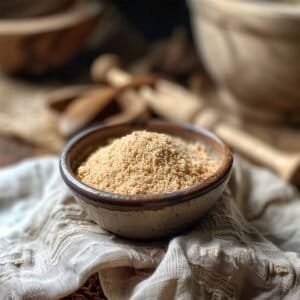
Roasted Rice Powder (Khao Khua) Toasty Essential of Thai Cuisine
Ingredients
- 1 cup uncooked sticky rice also known as glutinous rice
- Optional: kaffir lime leaves for an aromatic twist
Instructions
- Preparation of Rice: Start by placing the sticky rice in a fine mesh sieve. Run cold water through the rice, gently agitating with your hands to ensure all grains are thoroughly rinsed. Continue rinsing until the water runs clear, which indicates that most of the surface starch has been removed. This step is crucial for preventing clumping and ensuring an even toast.
- Drying the Rice: After rinsing, spread the wet rice on a clean, absorbent cloth or keep it in the sieve. Set it aside in a well-ventilated area for about 30 minutes. The goal is to allow the surface moisture to evaporate, which promotes better toasting and ensures the rice doesn't steam when heated. Ensure the rice is spread out in a single layer to dry evenly.
- Toasting the Rice:Heat a dry skillet over medium heat. Once hot, add the dried rice. If using, also add the kaffir lime leaves at this stage for an aromatic boost. Toast the rice, stirring continuously with a wooden spoon or shaking the pan to prevent any grains from burning. This process should take about 15-20 minutes. The rice should change to a golden brown, and a distinct nutty aroma should emerge, indicating it is properly toasted.
- Cooling and Grinding: Remove the skillet from heat and transfer the toasted rice into a bowl or plate to cool. This will stop the cooking process and prepare the rice for grinding. Once completely cool, remove any kaffir lime leaves if used. Transfer the rice to a spice grinder or mortar and pestle. Grind the rice to your desired consistency; a coarse grind will give a nice texture to dishes, while a fine powder will be more subtle but equally flavorful.
- Storing: Transfer the ground-roasted rice powder into an airtight container. Store in a cool, dry place away from direct sunlight and moisture. Properly stored, the roasted rice powder can maintain its optimal flavor and texture for up to three months, making it a handy condiment for enhancing various dishes.
Nutrition
Tasting Notes
Visual:
The powder is a feast for the eyes, boasting a beautiful golden brown hue with a slightly coarse and uneven texture. Specifically, the tiny grains catch the light, showcasing their rich, roasted coloration. Thus, this visual appeal, reminiscent of a sun-kissed field, hints at the depth of flavor contained within each granule, setting the stage for a delightful culinary experience.
Aroma: The aroma is a captivating blend of nutty and toasty notes. Specifically, it exudes the warm, comforting scent of freshly roasted nuts and a subtle hint of smokiness. Consequently, this inviting fragrance sets the stage for the rich taste experience that follows.
Taste: On the palate, roasted rice powder offers a complex flavor profile. Specifically, it delivers a rich, nutty taste with an underlying smokiness that adds depth and character. Additionally, there's a gentle sweetness from the rice itself, which balances the robust roasted flavors. As a result, this combination creates a harmonious blend of earthy and sweet notes. For instance, it can be sprinkled over a bowl of steaming hot pho to add a nutty depth, or mixed into a marinade for grilled meats to add a smoky richness. Therefore, the possibilities are endless with this versatile ingredient.
Texture:The texture is one of its standout features. Coarse and somewhat crunchy, it adds a delightful contrast to the dishes it garnishes. Each granule retains a slight crunch, enhancing the overall mouthfeel and providing an interesting tactile element that complements both soft and crunchy foods alike. This unique texture ensures that the roasted rice powder not only enhances flavor but also adds a pleasing textural component that is a must-try for any culinary enthusiast.
FREQUENTLY ASKED QUESTIONS FOR ROASTED RICE POWDER
Use uncooked glutinous rice, also known as sticky rice, for making Khao Khua. This type of rice provides the best texture and flavor for the roasted rice powder.
While it's possible to use regular rice, glutinous rice is preferred for its unique texture and nutty flavor when roasted. Regular rice may not yield the same results.
Khao Khua is commonly used in Thai salads like Larb and Nam Tok. Moreover, it adds a distinctive toasted flavor and a slight crunch to these dishes.

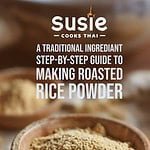
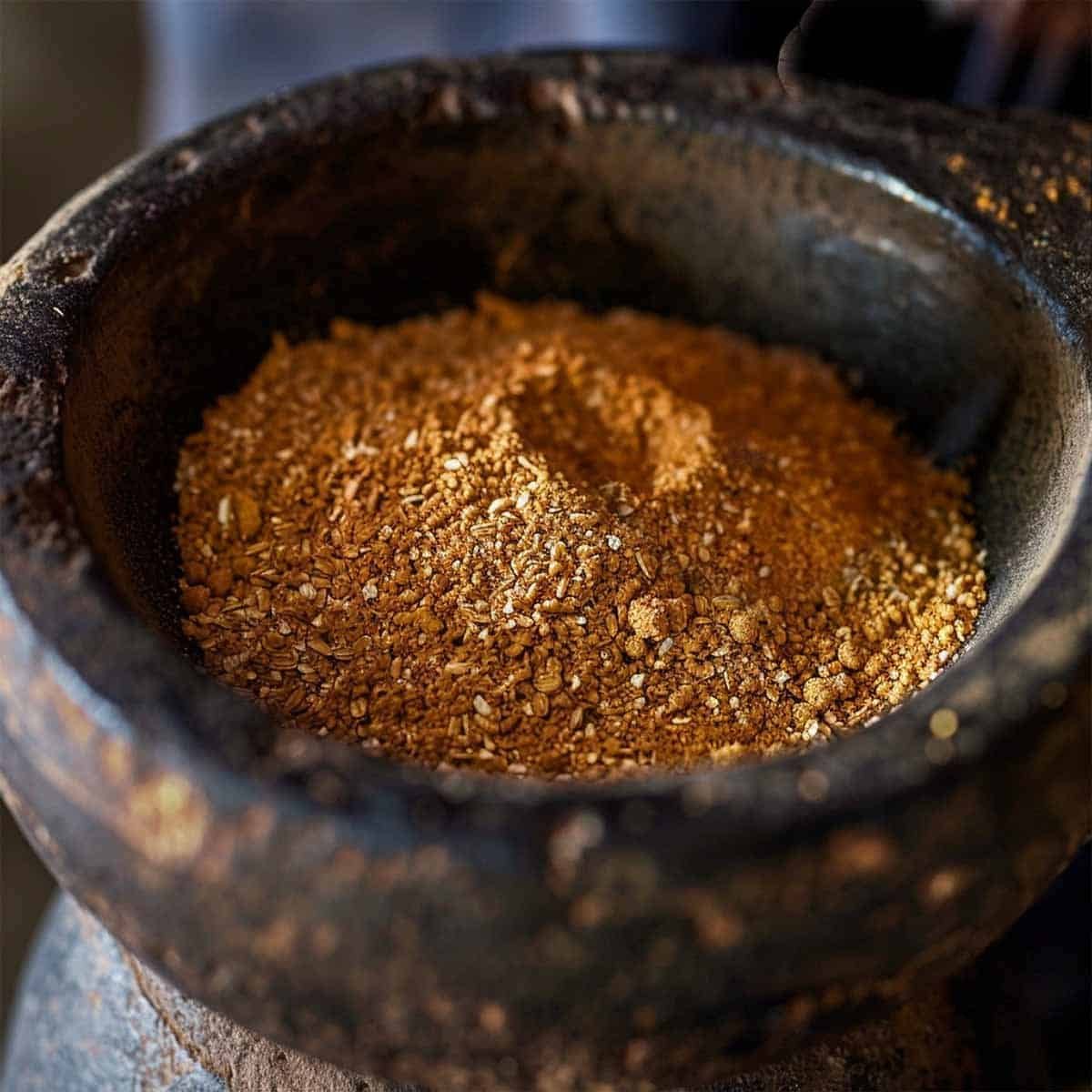

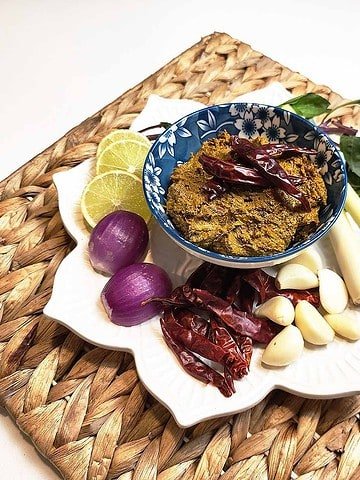
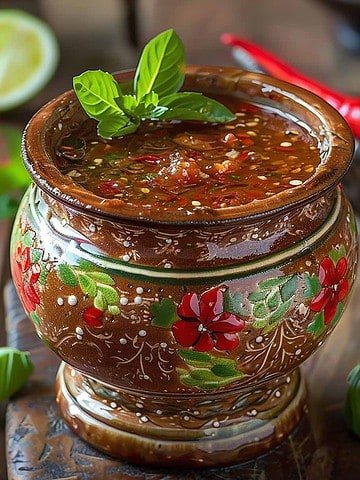
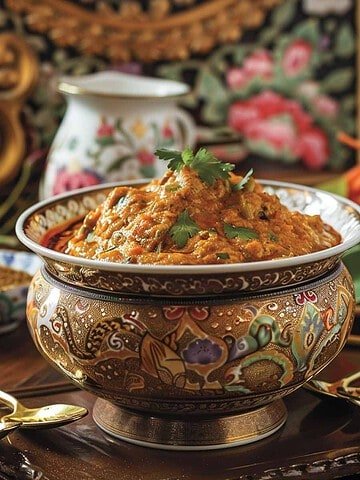
Leave a Reply